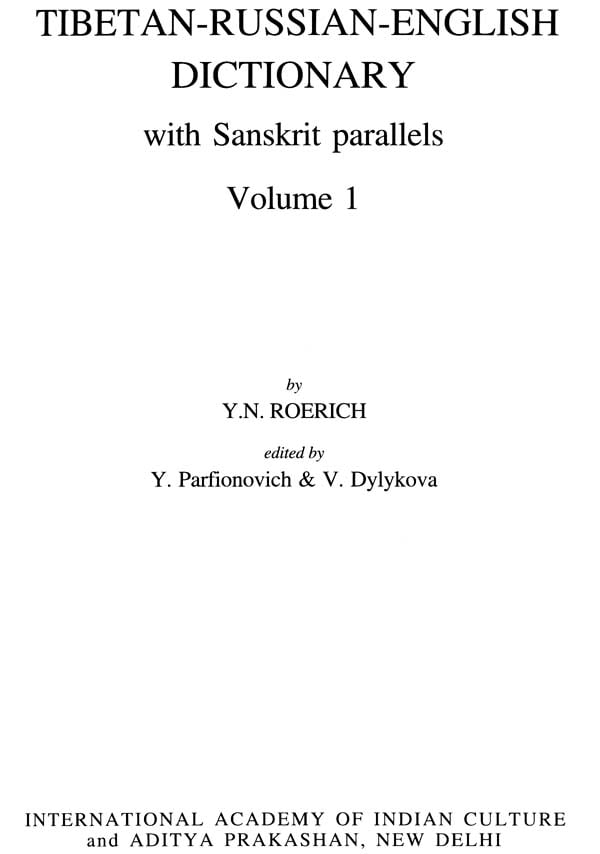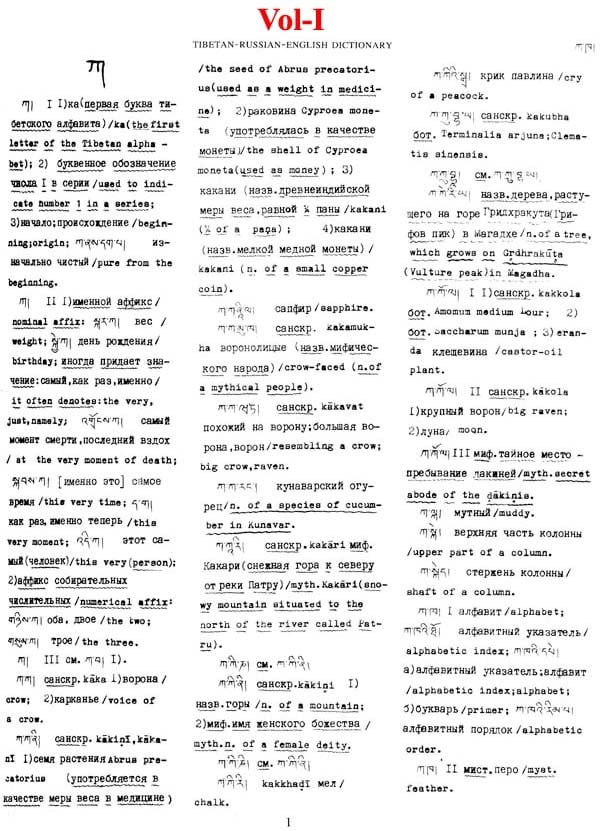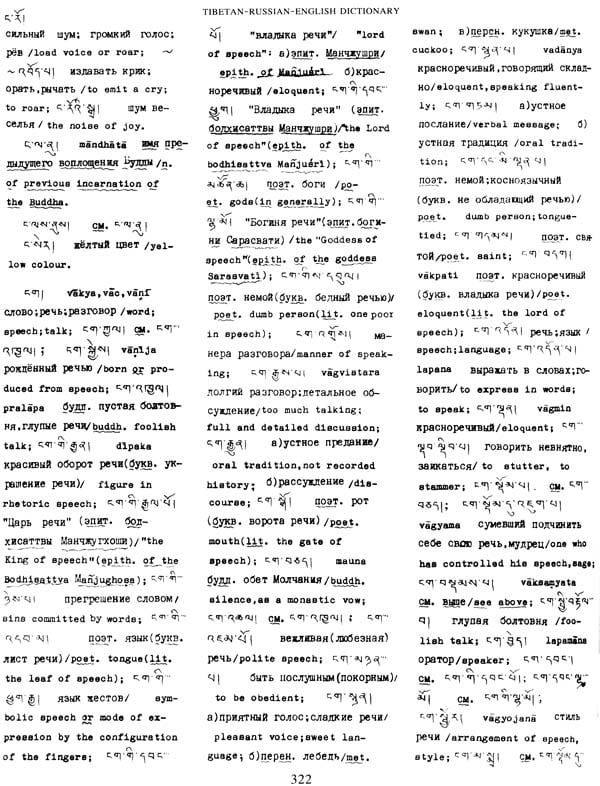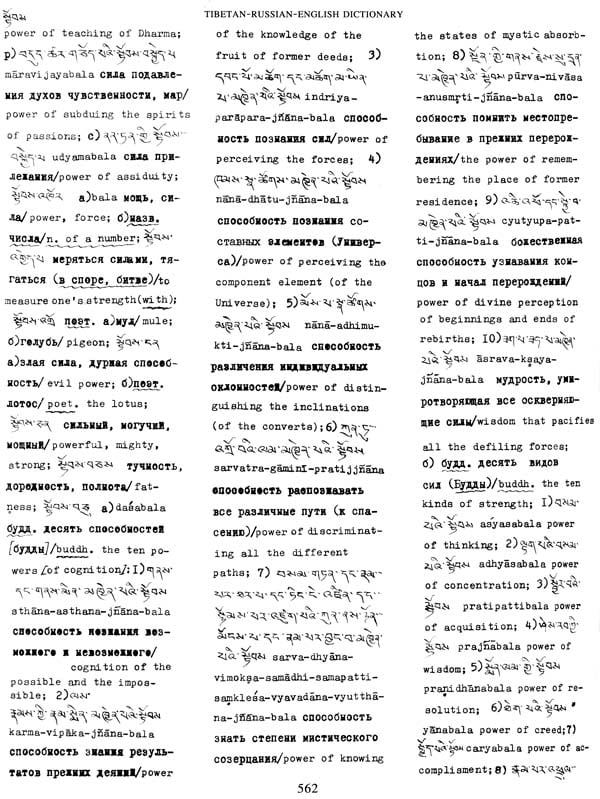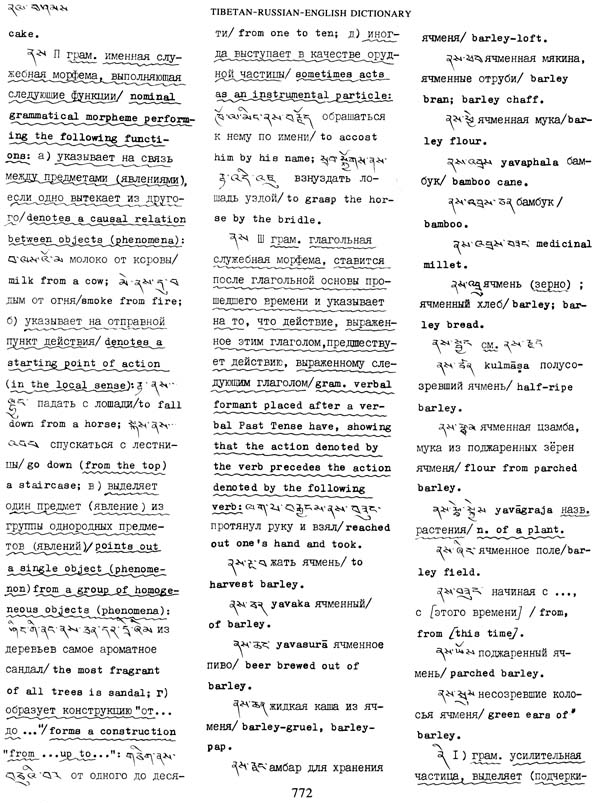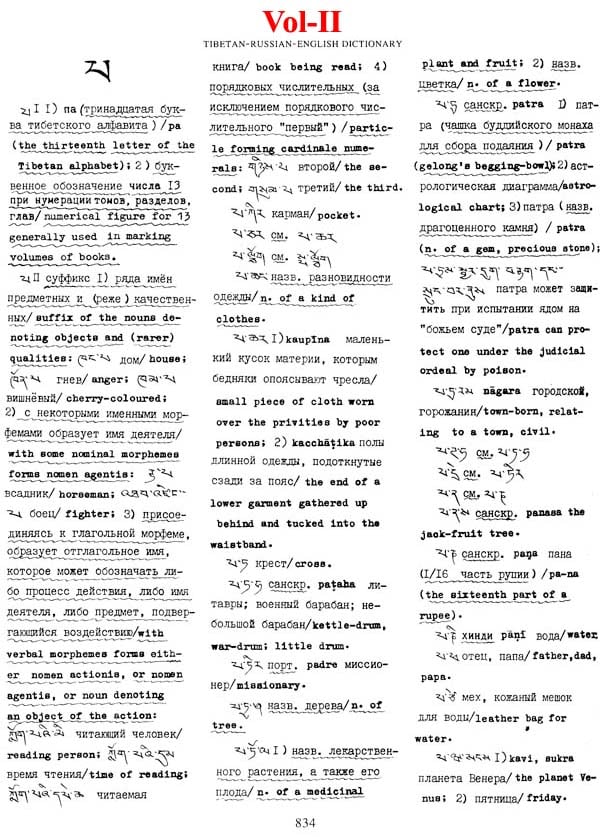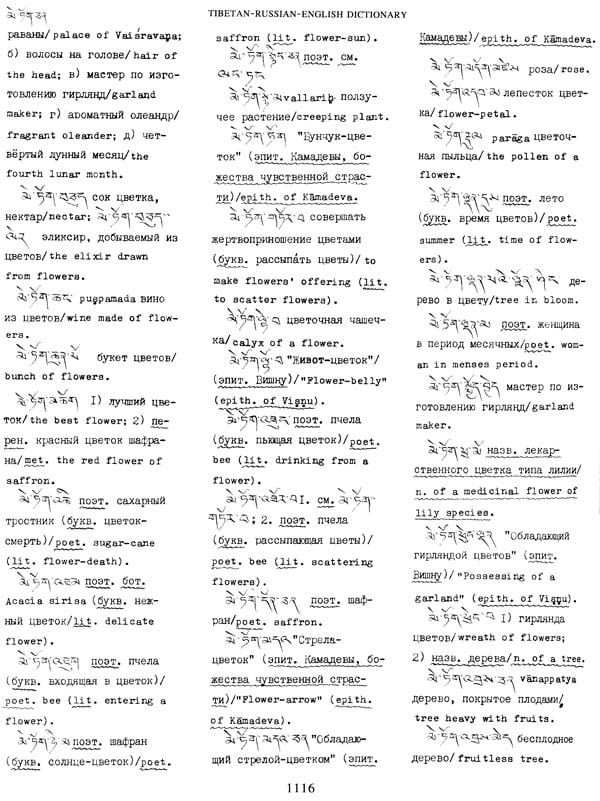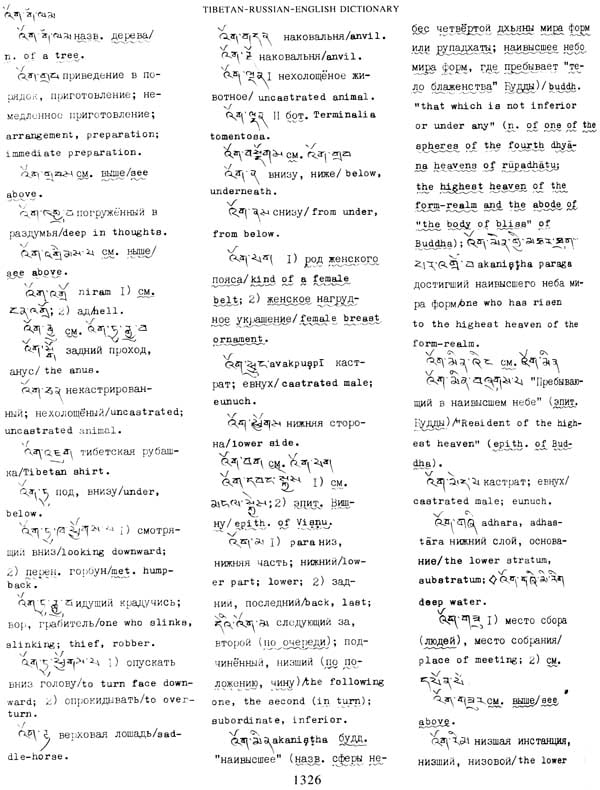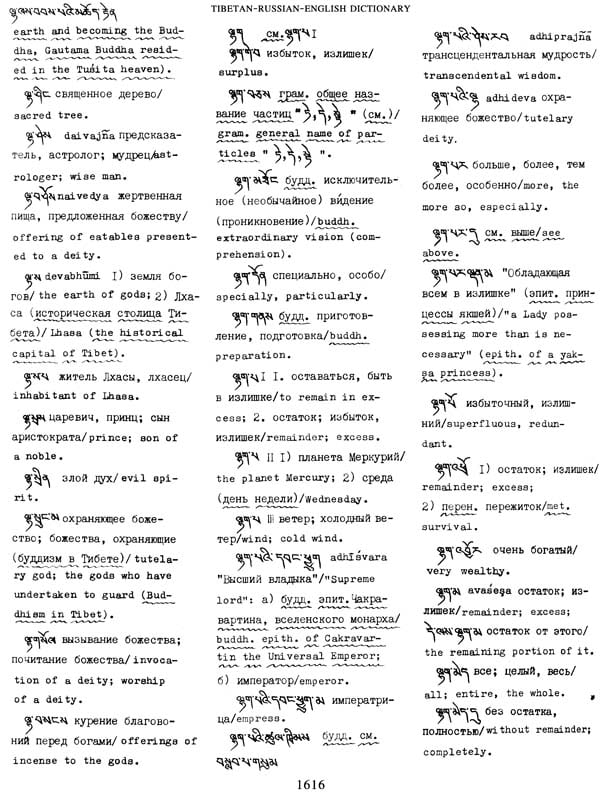
Tibetan-Russian-English Dictionary with Sanskrit Parallels (Set of 2 Volumes)
Book Specification
| Item Code: | NAS216 |
| Author: | Y. N. Roerich |
| Publisher: | ADITYA PRAKASHAN |
| Language: | TIBETAN RUSSIAN ENGLISH |
| Edition: | 2019 |
| ISBN: | 9788194085010 |
| Pages: | 1698 |
| Cover: | HARDCOVER |
| Other Details | 11.00 X 9.00 inch |
| Weight | 4.30 kg |
Book Description
This English Pali Dictionary includes the English renderings given in the Pali-English dictionaries of T.W. Rhys Davids and William Stede (1921) as well as in the Critical Pali Dictionary begun by Trenckner and edited by Dines Andersen and others. It is the first lexical effort to represent Classical Pali semantics in English word order. The English-Pali dictionaries compiled in SE Asia have neologisms or meanings assigned by popular local usage. The authenticity of meanings in their textual usage is assured herein. It is the first dictionary exclusively based on Pali literature, as interpreted by modern comparative linguistic studies. It will serve worldwide Pali scholarship, besides monastic Pali studies in the Theravada countries of SE Asia.
This dictionary by Y.N. Roerich was edited posthumously by Parfionovich and Dylykova, as a valuable guide to Classical Tibetan. It is a vade mecum to translate Tibetan historical and philosophical texts. It has new words which are not found in the dictionaries of Jaschke and S.C. Das. Roerich could not find words and expressions while translating the Blue Annals into English. He had to access traditional scholars like Gendun Chomphel from Tibet and Sanggye from Buryatia who interpreted the Annals in terms of language and its terse style that presupposes traditional learning. This dictionary is to facilitate the understanding of classical vocabulary. The entries are precise and lead the reader to the central concept of the word. It is an outcome of the life-long experience of Y.N. Roerich, supplemented by the two editors who had access to the Buryat heritage of Tibetan. This compact edition in two bindings will be a ready reference for all Tibetanists. The original edition was a rare even when published in the 1980s.
Y.N. Roerich was an outstanding scholar of Tibetan and Mongolian. He studied in Paris with Pelliot and made astounding discoveries like: Bokhara is the distorted form of Vihara and a vihara was actually discovered by Russian archaeologists near Numijkath a town that merged into Bokhara. He wrote on Tibetan Painting in 1925. Went on an expedition to Tibet, Mongolia and Central Asia during the years 1924-28. Wrote a grammar of Modern Tibetan and conducted fieldwork on the dialect of Amdo. His studies on the customs, folk songs, Gesar epic, Rama story, the biosketch of Chag lotsava who witnessed the destruction of Nalanda, and his magnum opus The Blue Annals are foundations of Tibetology. This dictionary crowns his multi-splendoured Tibetan studies.
The many historical, philosophical and literary monuments available in Tibetan have long been attracting the attention of the scholars of Tibetan history and philology as well as of the philosophy and history of Buddhism. Hence, their intense interest in Tibetan lexicographical publications.
Back in the 1920s Dr.Yuri Nikolayevich Roerich (1902-1960), an out-standing Tibetologist and general Orientalist of our time, began to compile a handbook aimed at facilitating the reading of Tibetan books. His keen pursuit of his task combined with a brilliant knowledge of many languages, his command of living Tibetan, the vast material he had at his disposal and his per-sonal communication with highly educated Tibetans enabled Dr. Roerich to complete his endeavour within a comparatively short time. The result was a manuscript Tibetan-English Dictionary with Sanskrit parallels — a collection of almost 65,000 words and expressions which fills 5,156 handwritten pages.
The basis of the manuscript is formed by the vocabulary of A Tibetan-English Dictionary by S.C.Das. Wide use is made of Tibetan national dictionaries, e.g., A Word Glossary (a defining dictionary of the Tibetan language with the old established system of writing), Tibetan-Mongolian dictionaries, including A Glossary of the Meanings and Spelling of Words, otherwise known as Agin Tibetan-Mongolian Dictionary. As a whole, the vocabulary brought together in the manuscript has reflected various stages of the evolution of the Tibetan written language chronologically ranging from the 7th century to recent times, when the written language has developed considerable affinity to living colloquial speech.
Although the manuscript was completed in 1933 it remained unpublished. Dr. Roerich got back to the question of publishing his dictionary after his return to the Soviet Union in 1957. Taking charge of the Sector of Culture and Philosophy of the Department of India, Pakistan, Ceylon and Nepal of the Institute of Oriental Studies of the USSR Academy of Sciences, the scholar, resumed work on his manuscript with the intention of extending it by Russian equivalents of the Tibetan words and some vocabulary derived from the Tibetan Dictionary of Choidak and several smaller Tibetan dictionaries of new terms, which had been published in Peking in the 1950s, and of editing his material in keeping with the requirements of modern lexicography. His premature death broke off Dr. Roerich's efforts.
The preparation of the manuscript for the pres's was completed by his pupils. This process had two stages.
**Contents and Sample Pages**
